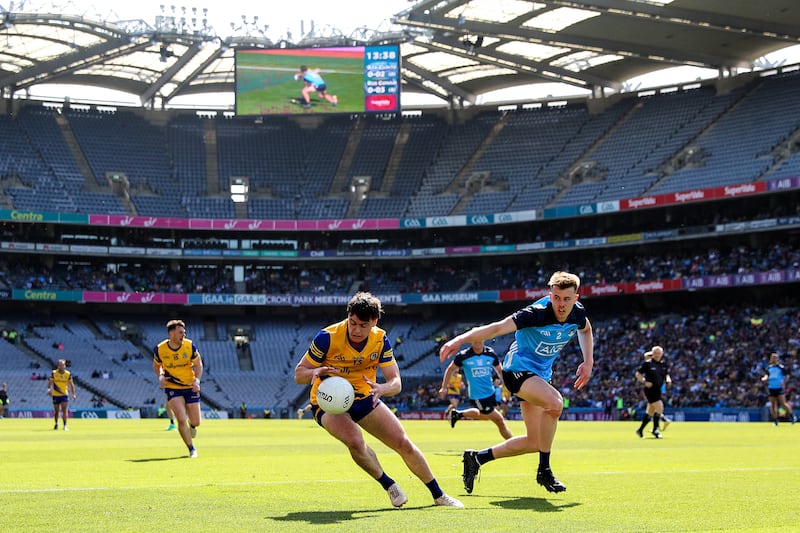During Galway’s long exile from the top table, my brothers and I could at least cling on to one thing. Galway were still out there fighting the good fight. We were still trying to play football the way it was meant to be played.
Defeats came and went but Galway were still gamely trying to play ball. We just weren’t good enough, so we went home. One brother in particular would trudge out of our last championship game every year, and say something like, “at least we’re not Cavan” – Cavan for some reason summing up everything he felt was wrong with football at that time (perhaps inspired by Joe Brolly’s ‘Black Death’ moniker).
But a realisation gradually dawned. The only thing more boring than playing a cautious style of Gaelic football is losing. And after a while, losing gets really, really boring.
Kevin Walsh was sick of losing. And so he brought Galway up to speed on possession football, defending deep with numbers, making yourself hard to beat. Galway were skilled enough at that to beat Kerry in Croke Park in the Super 8s in 2018, but were blown away by Dublin in that year’s semi-final.
READ MORE
That defeat of Kerry was Galway’s first win in Croke Park since the 2001 All-Ireland final, but I never had much interest in watching it back. The 2023 version of Galway have undoubtedly added plenty of layers on to what Walsh did with his team. But the central point remains the same. I owe Kevin Walsh an apology. He just got sick of losing before I did.
The weekend just gone offered up a bracing reaffirmation of what has been happening for the last couple of years. And this isn’t really a scathing criticism of the game as it’s currently being played – it’s just the reality. The boring thing to do is now also, almost always, the right thing to do.
So Roscommon holding on to the ball for over six minutes in their own defensive third and middle third is boring to watch. It is also without doubt the right thing to do, as proved by the point they kicked at the end of that now famous phase of possession, 77 passes, almost 10 per cent of the total game time, and a score to finish. It brooks no argument.
On Saturday, Westmeath had three minutes and 50 seconds of basically uncontested, and uninterrupted, possession at the start of the second half.
Monaghan had been comprehensively outplayed by Derry four weeks before their rematch on Saturday. They learned their lessons, and one of the key lessons was that they would have to drop their two best attacking threats, Conor McManus and Jack McCarron.

They wanted Rory Beggan, and 14 athletes. And it was the right thing to do. I can’t say it enough times. Every one of these selection or stylistic decisions was correct. It doesn’t mean it didn’t make me a little sad, though. Any sport that sees selecting an attacker of the luminous ability of McManus as an unconscionable risk is probably in need of a course correction.
This seems like an odd time to be writing about this. The Clifford/Walsh All-Ireland final of 2022 showed us the outer reaches of what was possible as an offensive player in Gaelic football.
But too many games have too many periods where nothing happens. It takes no skill whatsoever to hold on to possession inside your own half and hand-pass the ball back and forth between your goalkeeper and full-back line. All it takes is patience, and discipline. And it is, under the current rules, absolutely the right thing to do for many teams.
A few months ago, Denis Walsh wrote in this paper about Limerick’s hurlers’ laissez-faire attitude towards wides. Give the ball to the right player in the right position enough times, accept that there will be a few wides, and take your shot. The team that takes more shots usually wins the game.
That has not infiltrated Gaelic football. The refusal to take on a shot, even when you have 14 or 15 of your own players inside the opponents’ 65, is a real part of the frustration for the spectator. You’re in an ideal position to press the kick-out, even if the ball goes wide, and you have every chance of winning that kick-out if you force the ball to go long. It might go over, and if it doesn’t, at least you haven’t wasted three minutes of game time searching for a chance that might not materialise anyway.
Teams have likely crunched the numbers and realised that two or three minutes of possession football aids recovery, slows down the game, and is risk-free. I always thought a tactical innovation would naturally happen that would bend the game back towards more kicks to a contest, more scores, more attacks, and more excitement.
But the reality is that it may not happen, that it hasn’t happened. Rather than walking around the edges of the problem, it might be time for the big idea – whether that’s a shot clock, or a restriction on how many players you can have inside your own half, or restricting the use of the handpass.
If the last few weeks have proved anything, it’s that managers are now smart enough to adapt to whatever the new reality is. At the moment they’re expertly playing the hand they’re dealt by the rule book. We thought the game would fix itself. It hasn’t.
















